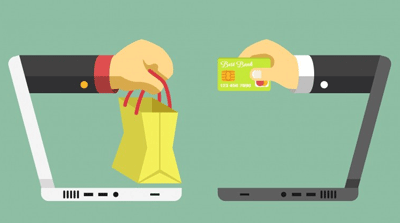Getting people to buy things directly from manufacturers is hard, and there’s a secret reason. In a new column, chief strategy officer Brad Berens explains.
_______________________________________________________________________________________
By Brad Berens
 Three popular letters this month are DTC, which stands for “direct to consumer.” DTC is an exploding category for low consideration products that we used to buy in person at the pharmacy or grocery store. Then we got Amazon and could order online. Now, we can also go directly to the manufacturer, cutting out the middlemen, and maybe saving money.
Three popular letters this month are DTC, which stands for “direct to consumer.” DTC is an exploding category for low consideration products that we used to buy in person at the pharmacy or grocery store. Then we got Amazon and could order online. Now, we can also go directly to the manufacturer, cutting out the middlemen, and maybe saving money.
DTC companies face some obvious challenges and a less-obvious one.
The obvious challenges: awareness, cost, and subscribers
Three representative pieces of recent coverage explore the obvious challenges: former AOL chief Tim Armstrong is launching “dtx,” a company that showcases DTC products in festivals in secondary markets so that customers can discover them. The Wall Street Journal’s Nat Ives profiled three recently-failed DTC startups in an article that is bracingly reminiscent of a dotpocalpyse-era daily exercise in schadenfreude, f*ckedcompany.com. And Digiday’s Tim Peterson wrote about how DTC companies are facing challenges as they experiment with advertising on TV rather than on increasingly expensive Facebook.
From another direction, big manufacturers are trying to figure how to combine traditional retail sales, e-commerce through sites like Amazon, and DTC. The most famous example of this was Unilever’s billion-dollar purchase of Dollar Shave Club in 2016.
DTC splits into two general categories: things that you buy once or once in a while and things that you need regularly.
For things that you buy one or once in a while, it’s unlikely that you’ll go DTC for a low consideration purchase because it’s easier to go to a store or to buy things from Amazon. You don’t need to risk your credit card on another website. And if you’re a Prime Member, you know that you can trust that it will get there in two days and that it’s a fair price.
For things that you need regularly, DTC overlaps with another category, which is EaaS or “everything as a service.”
The beatific vision of EaaS is that it will be easier for you to subscribe to razor blades or detergent so that you never have to worry about running out. The grim reality is that the stakes of running out of most things just aren’t that high. Early one morning last week we ran out of milk before breakfast. I dealt with this emergency by… going to the neighborhood market. Crisis averted.
Plus, with the exception of vitamins or medications that you take daily, the rate of consumption for most things isn’t stable. Maybe I’ll skip shaving for a few days to see how I’d look with a beard? (Answer: bad idea as it makes me look 90 years old.) I don’t need these impulses to come with a new chore of pausing my razor subscription — that’s a homework assignment for a class I didn’t sign up to take.
So, the obvious challenges to DTC companies are building awareness in a cost-effective way, keeping prices low, and convincing customers to subscribe.
The less obvious challenge: people don’t care enough to buy DTC
I have a pet theory for which I have no direct data but some support from how attention works. My theory is that by and large we don’t care very much about the content of most of our everyday decisions.
_________________________________________________________________________________________________
Growing up, most of us didn’t need to worry about whether there was milk in the fridge because we had Mom or Dad to do it for us. Each of us had, in other words, an agent working on our behalf who would monitor the environment for things that needed a constant supply and then refresh supplies. These days, instead of Mom and Dad we have Alexa and Siri and Google Assistant.
_________________________________________________________________________________________________
Most people, I suspect, really and truly care about two or three brands in their lives. Personally, I care about Peet’s dark-roast coffee and Doctor Marten’s shoes (but only the colorful ones). That’s it. I don’t care enough about other brands to cross the street to get them if something equivalent and about the same price is there in front of me. Most decisions are like that. We don’t care.
What we do care about is getting those decisions made and out of our way.
When it comes to branded goods (Evian over the supermarket bottled water, Coca-Cola over the store brand in a red can, Charmin rather than Kirkland), we don’t pay more (the brand premium) because the branded goods are better than the generics. Frequently they’re identical. We pay the brand premium because we don’t want to bother figuring out the best thing at the best price. It just doesn’t matter that much.
If I habitually buy Crest toothpaste, it’s only because that habit saves me from spending cognitive energy on something trivial. I’ll stick with Crest until I die unless something unusual happens.
Another way of putting this is that when we face most decisions there are two different costs that we have to pay in two different currencies: money and attention. DTC companies focus a lot of effort on money and not enough on attention.
That may seem paradoxical because DTC companies position themselves as a way to save attention energy: e.g., just subscribe to razors and forget about it. The problem is that managing that subscription then takes energy, particularly for thrifty consumers who like deals.
Can anything save DTC companies?
Growing up, most of us didn’t need to worry about whether there was milk in the fridge because we had Mom or Dad to do it for us. Each of us had, in other words, an agent working on our behalf who would monitor the environment for things that needed a constant supply and then refresh supplies… all while we were busy coloring, watching TV, playing videogames, or maybe even going outside. These agents would know when we cared about, say, brand name Rice Krispies versus the store brand and when it didn’t matter.
These days, instead of Mom and Dad we have Alexa and Siri and Google Assistant.
One hope for DTC brands is that the smart home trend continues to mature, eventually turning pantries and refrigerators into smart pantries and smart refrigerators. Once Alexa (or Siri, or…) is on the case, then we’ll never again run out of things. That’s the good news.
The bad news, at least for the DTC companies, is that in this scenario Amazon (or Apple or Google) is the company that owns the relationship with the customer. And how likely is it that Alexa will order anything other than an Amazon brand?
__________

Brad Berens is the Center’s Chief Strategy Officer.
See all columns from the Center.
February 20, 2019

